Temple of Aphaia What to see in Aegina

The Temple of Aphaia, Aegina, Greece (Illustration) Ancient History
Struttura del tempio di Afea. Il tempio di Afea, in greco Aphaia fu costruito tra il 490 ed il 480 A.C. sulle rovine di un edificio minore probabilmente distrutto dai Persiani. E' composto da una grande terrazza sacra rettangolare di calcare poroso ricoperto di stucco che misura circa 66 metri e circondata da diverse colonne di pietra locale.

Temple of Aphaia What to see in Aegina
THE TEMPLE OF APHAIA ON AEGINA: THE DATE OF THE RECONSTRUCTION IT is widely believed that c. 510 BC the sixth-century Temple of Aphaia on Aegina was. 510); A. Invernizzi, I Frontini del Tempio di Aphaia ad Egina (Turin 1965) 258 (c. 510); P.M. Fraser, 'Archaeology in Greece, 1969-1970', AR 1969-70, 7 (c. 520-510); B.S.
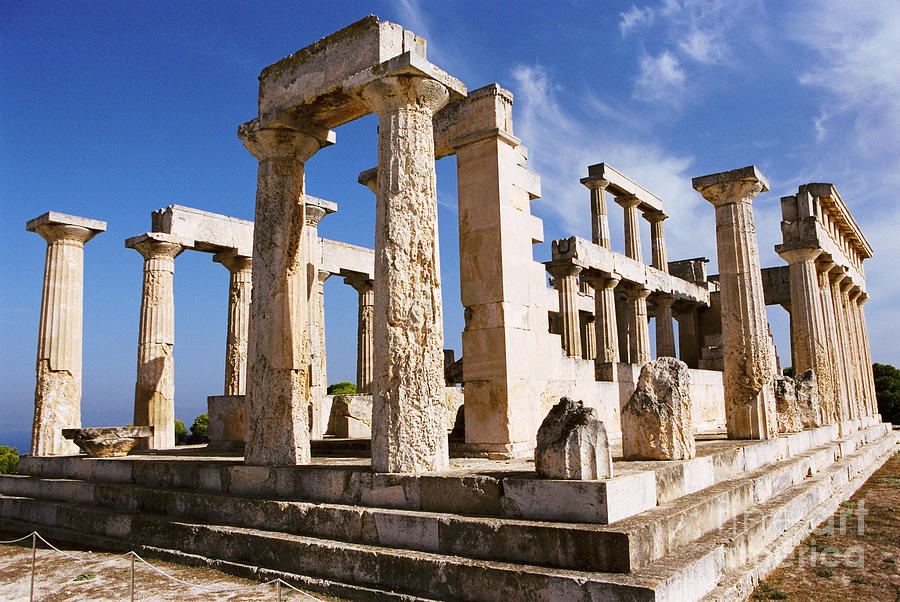
Temple of Aphaia on Aegina Photograph by Paul Cowan
About. Transcript. East and West Pediments from the Temple of Aphaia, Aegina, Archaic/Early Classical Periods, c. 490-480 B.C.E. (Glyptothek, Munich) Speakers: Dr. Beth Harris and Dr. Steven Zucker. Note: Recent scholarship suggests that both pediments of the Temple of Aphaia at Aegina were made at the same time in the Early Classical period.
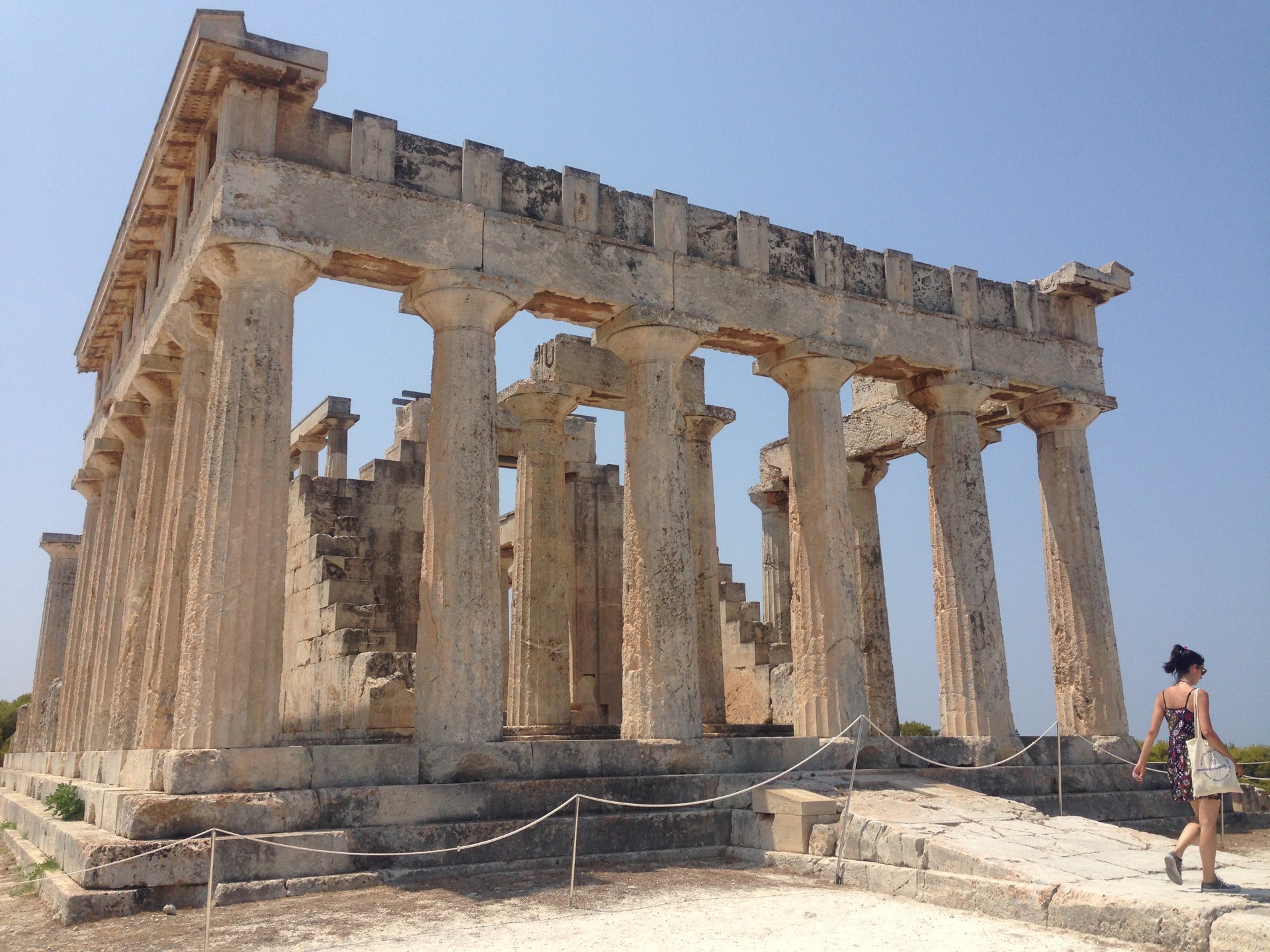
Temple of Aphaia What to see in Aegina
INFORMATION. The temple of Aphaia stands on a pine-clad hill in northeast Aegina. It is the most important monument in the sanctuary of Aphaia, which appears to have been founded on a site used for worship since the Mycenaean period. Pausanias (2, 30, 3-5) mentions the myth of Aphaia and identifies her with the Cretan divinity Britomartis.

Tempio Di Aphaia Sull'isola Di Aegina, Grecia Immagine Stock Immagine
Historical records and archaeological excavation have shown that a significant temple structure stood on the site in the 6th century BC and it is believed this earlier incarnation was destroyed by fire in 510 BC. The importance of the Aphaia sanctuary declined after the Athenians began to dominate Aegina from the middle of the 5th century BC.

The Temple of Aphaia, 500 BC. Aegina island, Greece. (2560x1707
Appunto di storia dell'arte che descrive in modo approfondito e chiaro le caratteristiche del Tempio di Afaia a Egina Invia appunti. Partenone e santuario di aphaia ad egina. Tempio di Nettuno.

Aphaia Temple GR Cycling
However, from the middle of the fifth-century BC, the Athenians dominated the rival island of Aegina, and the Temple of Aphaia was linked with the goddess Athena. The Temple was built in 500 BC and is made of porous limestone that was later coated with an outer layer of stucco and richly painted. Like the Parthenon and the Temple of Poseidon.

Temple of Aphaia The Temple of Aphaia, on the Island of Ae… Flickr
The Temple of Aphaia (Greek: Ναός Αφαίας) or Afea is an Ancient Greek temple located within a sanctuary complex dedicated to the goddess Aphaia on the island of Aegina, which lies in the Saronic Gulf.Formerly known as the Temple of Jupiter Panhellenius, the Doric temple is now recognized as having been dedicated to the mother-goddess Aphaia. It was a favourite of Neoclassical and.

Temple Of Aphaia Afea On Aegina Island Of Stock Footage SBV313046594
The Temple of Aphaia is one of the most important and well-preserved monuments in Greece. This is the most important surviving monument of the Sanctuary, dedicated to Aphaia. The temple was built around 500-490 BC. and is a Doric pavilion. It is an intersection for the ancient Greek architecture since it has a colonnade of 12 columns on the.
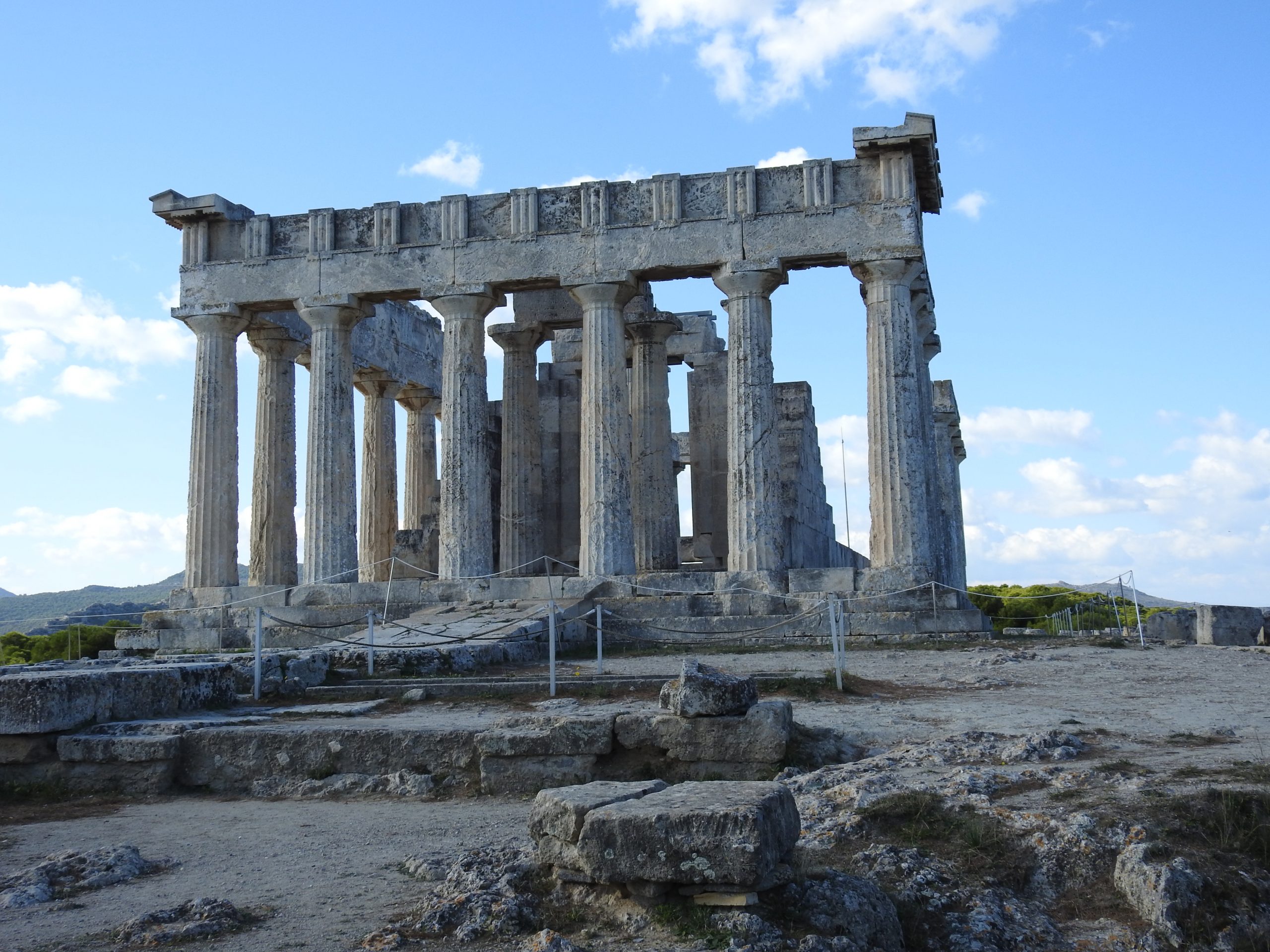
Tour the Temple of Aphaia in Aegina
Scusate se arrivo al porto di Egina dal Pireo, quindi sono senza mezzo per muovermi poi sull'isola, sapete dirmi come faccio ad arrivare al Tempio di Aphaia? Beppe56Genova. Genova 35 contributions. Gli autobus per Aia (santa) Marina passano per il Tempio. Read all replies. View all. Also popular with travelers.

GR06 3286 Temple of Aphaia, Aegina a photo on Flickriver
Il tempio di Aphaia. S u un promontorio dell'isola di Egina, vicino ad Atene, si è ben conservato un tempio del 500 a.C., particolarmente interessante per le sculture presenti nei frontoni e il loro straordinario naturalismo. Il tempio in questione è dedicato ad Aphaia, una divinità locale che in seguito sarà assimilata ad Athena. L'edificio è piccolo, ma di grande impatto grazie alla.
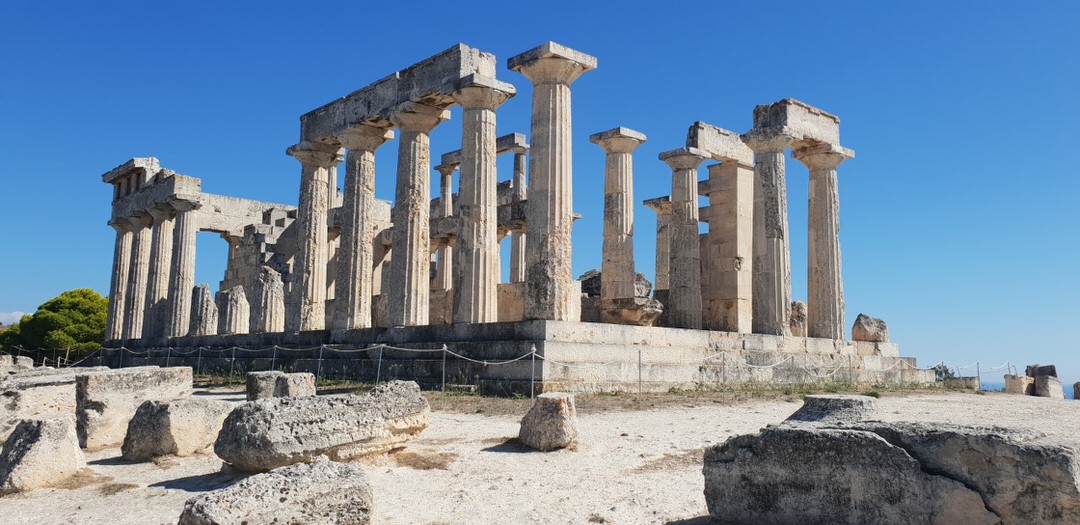
The sanctuary, the temple and the museum of Aphaia in Aegina
Il Tempio di Afea (Aphaia, Afaia) nell'isola di Egina (fig.1) e' descritto da Pausania nella Periegesi della Grecia, edizione a cura di Antonio Nibby (Roma, 1817, I, libro 2, capo 30, 3, p.205). Pausania, inserendolo nel contesto storico narrato da Erodoto, lo dice edificato da Eaco sul monte di Zeus e racconta di averne veduto le sculture.

Temple of Aphaia Aegina 500 BCE Templos, Arquitetura grega antiga
In the 6th century the first temple of Aphaia was constructed and a 2nd altar was set up between the temple and the original altar. A southern gateway or propylon was also added to the temenos.. , EAA (1960) 246ff. G. Grüben, "Die Sfinx-Saule von Aigina," AM 80 (1965) 170ff. A. Invernizzi, I frontoni del tempio di Aphaia ad Egina (1965). B.

Temple of Aphaia Aegina, Greece
Note: Recent scholarship suggests that both pediments of the Temple of Aphaia at Aegina were made at the same time in the Early Classical period, likely by two different workshops working in two different styles. East and West Pediments from the Temple of Aphaia, Aegina, Archaic/Early Classical Periods, c. 490-480 B.C.E. (Glyptothek, Munich)
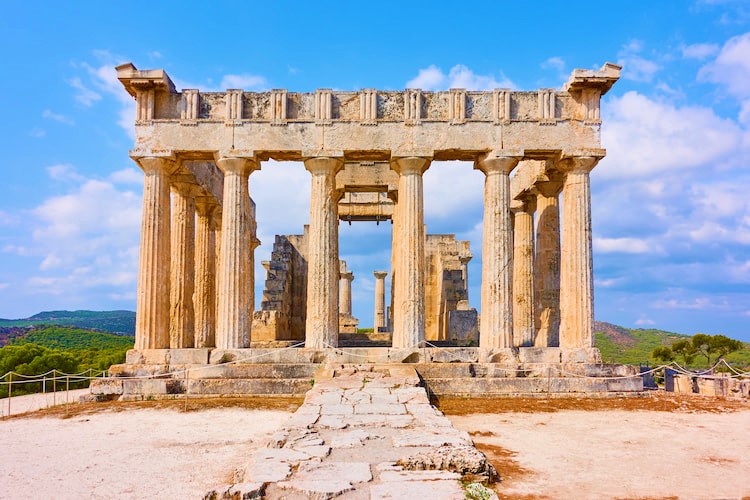
Classical Ancient Temple Of Aphaea Athina In Stock Photo By ©Panos
Il tempio di Afaia nell'isola greca di Egina è un tempio dedicato alla dea locale dell'isola. Fasi storiche del santuario Pianta del santuario di Afaia a Egina: in blu le strutture del VII secolo a.C., in verde quelle del VI e in arancione quelle del V.. Il Mito di Aphaia Foto di Pompeo Maritati, su associazioneitaloellenica.org.

Temple of Aphaia, Egina Island, Greece null Greece, Greek islands
BACKGROUND. The Temple of Aphaia on the island of Aegina, dating to the end of the Archaic period, circa 500 BCE, represents the completion of the setting down of the basic tenets of the Doric order of Greek architecture (Biers, p. 157). It was built of limestone after the previous temple on the site, made of wood and constructed circa 570 BCE.